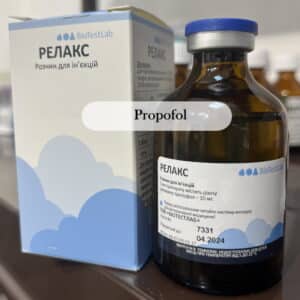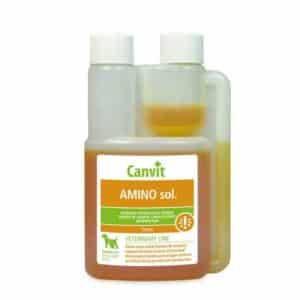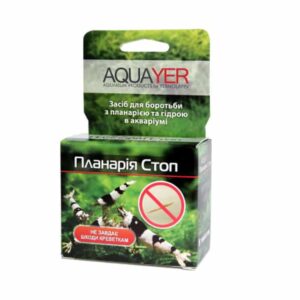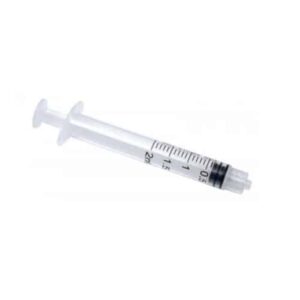What about Tylosin for dogs?

Tylosin-responsive diarrhea (TRD) is a syndrome that includes all cases in which tylosin antibiotic treatment has had a positive effect on treating dogs with intermittent or chronic diarrhea. Antibiotic treatment often leads to resolution of clinical gastrointestinal (GI) signs, and thus the term antibiotic-responsive diarrhea (ARD) was coined. Recently, trials have been published in which tylosin proved to be particularly effective in treating dogs with chronic or intermittent diarrhea, with the effect of tylosin differing from that of other antibiotics, thus indicating that the more newly established term TRD is more appropriate than ARD.
Tylosin antibiotic
Tylosin is a macrolid, bacteriostatic antibiotic that has activity against most Gram-positive and Gram-negative cocci, Gram-positive rods and Mycoplasma. However, the Gram-negative bacteria Escherichia coli and Salmonella spp. are intrinsically tylosin-resistant. Tylosin is used only in veterinary medicine, and its most common indications are treating pigs with diarrhea or poultry with chronic respiratory diseases. Tylosin has also been used as a feed additive in food animal production, and it has been shown to increase gain and feed efficiency, especially in pigs. Debate about the mechanisms underlying tylosin-mediated growth enhancement is ongoing.
Tylosin is usually used in powder form for pigs and poultry. In Finland and in some other countries, tylosin is also available in tablet form, facilitating its use in dogs.
Experiences of tylosin in treating diarrhea
Our experience with tylosin is derived from numerous studies with dogs suffering from exocrine pancreatic insufficiency (EPI).These studies have clearly shown that tylosin has a favorable effect as a supportive therapy on dogs with EPI.
In Finland, tylosin has for years been the most common drug in the treatment of unspecific intermittent or chronic diarrhea in dogs. Anecdotal reports by veterinarians and dog owners reveal that many dogs with diarrhea respond well and quickly to tylosin treatment, generally within a few days of initiation of treatment. When treatment is discontinued, however, diarrhea reappears in many dogs within a matter of weeks or months. Some dogs need a treatment over very long period. Even so, the effect of controlling diarrheal signs does not appear to diminish with time, and thus there is no need to increase the dosage of the medication. No apparent tylosin-associated adverse effects have been reported.
TRD can affect dogs from all breeds and ages but is most often seen in middle-aged, large-breed dogs. The diarrea signs appear often as intermittent but progressivly become more frequent and end as persistent diarrhea. Abnormal loose fecal consistency is the predominant sign. The majority of the owners describe their dogs’ feces as watery and/or mucoid indicating that TRD affects both the small and large bowel. Increased frequency of borborygmus and flatulence are also typically seen. Vomiting is occasionally seen during the diarrheal outbreaks.
In dogs with TRD the blood parameters are usually normal. Also the abnormal findings in diagnostic imaging studies and histological examination of intestinal biopsies, are only mild or completely absent.
Clinical studies with tylosin
Only a few studies on treating diarrheal signs in dogs with tylosin have been published. Van Kruiningen, (1976) reported more than 30 years ago that tylosin had a good effect in treatment of unspecific canine diarrhea. Recently, our study group performed two clinical trials to obtain more information on TRD. The first study included 14 adult pet dogs of 12 different breeds. Each dog’s diet remained unchanged throughout the study. The dogs had shown chronic or intermittent diarrheal signs for a period of more than one year. Diarrhea had been successfully treated with tylosin for at least six months, and the treatment had been discontinued at least twice but the signs had always occured. When the study commenced, all dogs had been on tylosin for at least one month and were otherwise healthy. Thereafter, tylosin was discontinued and the dogs were monitored for a period of up to one month to determine whether signs of diarrhea would reappear, as suggested by the clinical history. Diarrhea reappeared in 12/14 dogs (85.7%) within 30 days. During the treatment trial diarrhea ceased with tylosin in all dogs within three days and in most dogs within 24 hours. In contrast, prednisone did not completely resolve diarrheal signs, and the probiotic Lactobacillus rhamnosus GG did not prevent the relapse of diarrhea in any of the dogs.
In the second study in an experimental dog colony, seven beagles showed signs of chronic diarrhea for at least one month. The dogs were treated with tylosin for ten days. During the treatment period the feces became significantly firmer, although they remained unacceptably loose. When the treatment was discontinued, diarrhea reappeared within three weeks. Treatment with other antibiotics (metronidazole, trimethoprim-sulfadiazine, or doxycycline) or with prednisone had almost no effect on fecal consistency, the feces remaining abnormally loose in all dogs. The diet was then changed for a ten-day period from a highly digestible moist pet food to a dry food developed for normal adult dogs. The feces again became significantly firmer, although they remained loose in some dogs. The dry food period was then extended to three months, but the fecal consistency continued to fluctuate from ideal to diarrhea. Since the consistency was not satisfactory, the dogs were treated a second time with tylosin for ten days. The feces then became normal in consistency and remained so throughout the entire three-month follow-up time. The study revealed that in the experimental dogs with chronic diarrhea the fecal consistency became significantly firmer both with tylosin treatment and with dietary modification. Neither of the treatments alone was sufficient to obtain ideal fecal consistency, but when the dogs were treated simultaneously with both regimes, permanent ideal fecal consistency was attained. The study thus indicated that tylosin and feeding regimes have synergic effects.
Pathophysiology
The etiology of TRD remains obscure. Since tylosin is an antimicrobial agent, it has been speculated that some pathogenic bacteria are likely responsible for the diarrheal signs. Based on negative culture results and ELISA tests, we have excluded such common enteropathogenic bacteria as Clostridium perfringens, Clostridium difficle, Salmonella spp., Campylobacter spp. , and Yersinia spp. as causative factors for the diarrheal signs occurring in TRD. Less well-defined species causing diarrhea in dogs, such as Plesiomonas shigelloides, Lawsoni intracellularis, and Brachyspira spp., have also been excluded.
Our ongoing studies have revealed that administration of tylosin leads to significant but transient changes in the composition of the small intestinal microflora. The results support the hypothesis that tylosin promotes the growth of beneficial commensal bacteria, while suppressing deleterious bacteria.
Besides antibacterial properties, tylosin may possess anti-inflammatory properties, contributing to its effectiveness in treating canine diarrhea. The mode of action must differ, however, from the immunomodulatory effect of prednisone because prednisone treatment did not completely resolve diarrheal signs in the same dogs that responded to tylosin.
Diagnostic protocol for dogs with chronic diarrhea
The diagnostic protocol used for dogs with chronic diarrhea by the Faculty of Veterinary Medicine, University of Helsinki, is represented in Figure 1. In patients with chronic diarrhea, every effort should be made to achieve a diagnosis to enable a specific therapy. Unfortunately, this is not always possible in which case empirical therapeutic trials are used in the workup of these patients. There are conflicting opinions about how long an empirical therapy should be attempted. We recommend ten days if a dog has chronic diarrhea or if the interval between intermittent diarrheal episodes is only a few days. If signs of diarrhea disappear or are relieved during this period, the treatment should be continued another 2-6 weeks. When the interval between episodes of intermittent diarrhea is long, i.e. more than one week, the length of the empirical treatment period should be prolonged. The workup protocol displayed in Figure 1 for patients with chronic or intermittent diarrhea is applicable to most veterinary practices. It is also useful regardless of whether the clinical signs are typical of large- or small-intestine disease. The prevalence of diseases that can simultaneously affect the small and large intestines is high.
The initial evaluation (A) comprises obtaining a thorough case history (A1), conducting a physical examination (A2), and taking the basic laboratory tests, including a complete blood count, a serum chemistry profile, and measurement of serum concentrations of trypsin-like immunoreactivity (TLI) (A3). According to the initial examination, the patients are then divided into two groups. The first group includes patients showing clinical abnormalities in addition to diarrhea (Group B), while the second group shows no obvious abnormalities other than diarrhea (Group C).
Patients with obvious abnormalities (B) suffering from systemic disorders with secondary diarrhea (B1a), such as hepatic failure, renal failure, hypoadrenocorticism, and EPI (B1b), should be identified before starting trial therapies. Also if hypoproteinemia (B1c), melena and/or anemia (B1d), or abnormal palpation findings (B1e) are found, the reason for these abnormalities should be examined.
Dogs with diarrhea but no other abnormalities (C) are treated orally with fenbendazol 50 mg/kg for three days (C1) to rule out endoparasites as the causative factor for GI signs.
Food is probably the most common cause of diarrhea (C2), and adverse food reaction should always be excluded before empirical treatment trials with different drugs are initiated. Opinions vary widely about how the diet should be changed for a dietary treatment trial. Unfortunately, current recommendations are largely based on anecdotal evidence rather than on controlled trials. The most common recommendation is to use a diet with novel protein and carbohydrate sources, with the former restricted to a single animal source.
If modifying the feeding regime fails to produce a satisfactory fecal consistency, the next step is to treat the dog with tylosin 25 mg/kg BW q24h (C3). Dogs responding to tylosin treatment will usually do so within 3-5 days, and diarrhea will remain absent as long as treatment continues. In many dogs, diarrhea will reappear within some weeks upon discontinuation of treatment. If diarrheal signs reappear, the dog owner should change the dog’s diet once again to make sure that the feeding regime is not involved in the etiology of the signs. If diarrheal signs continue, tylosin treatment is re-initiated. The effect of tylosin does not appear to diminish even in dogs that have been treated for years. The dose of tylosin for long-term use should be tapered to the lowest possible dose that controls clinical signs. Many dogs need only half of the recommended dose.
Although no adverse effects during tylosin treatment have been reported, efforts should be made to reduce the use of tylosin. This is because our recently conducted studies have indicated that tylosin causes wide resistance to antibiotics in the intestine (unpublished results). Certain probiotic lactic acid bacteria (LAB) have been shown to be effective in the prevention and treatment of a variety of diarrheal disorders in humans and in experimental mouse models. Hopefully in the future a probiotic LAB can be used instead of tylosin to treat or prevent chronic diarrhea in dogs with TRD.
















































